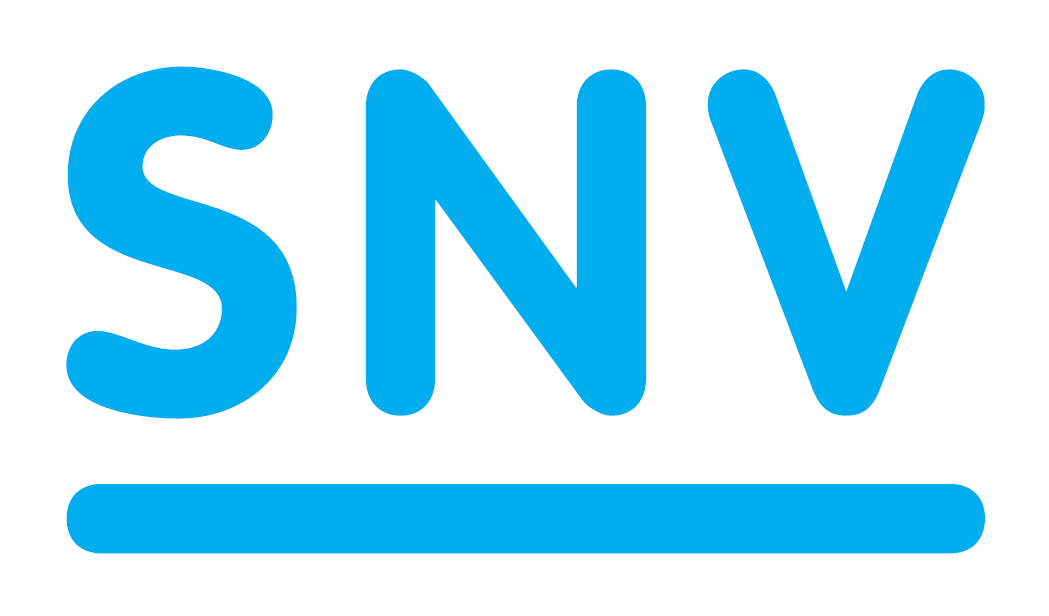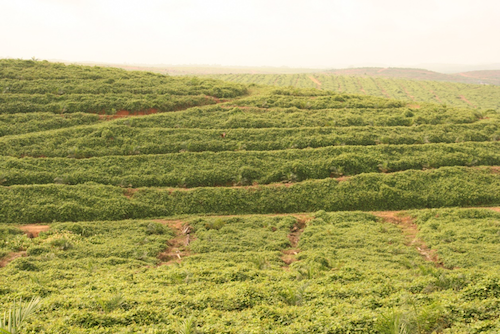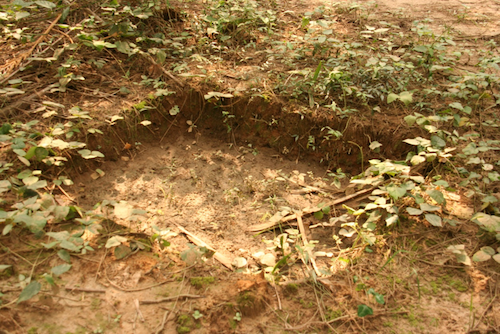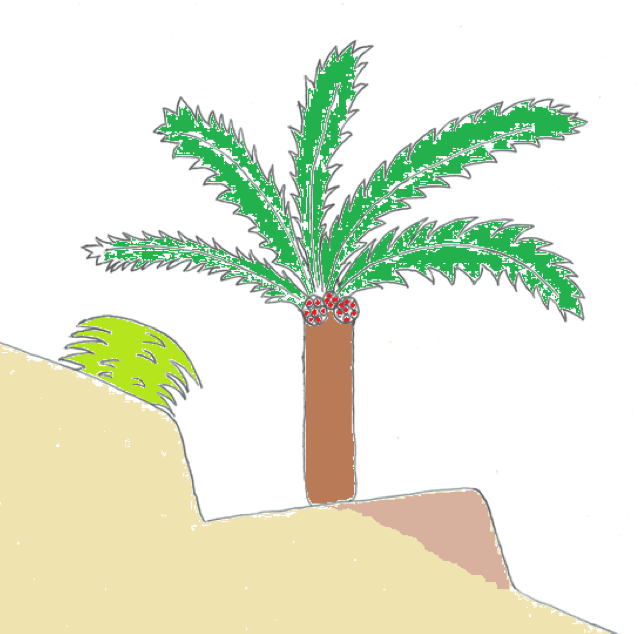Difference between revisions of "Budidaya Kelapa Sawit Berkelanjutan / Konservasi tanah"
Khukuh.ayuda (talk | contribs) (Created page with "link=http://www.snv.org/ link=http://www.wageningenur.nl/en/wageningen-university.htm Download:...") |
Khukuh.ayuda (talk | contribs) (Translation to Bahasa Indonesia on process) (Tag: Visual edit) |
||
| Line 2: | Line 2: | ||
[[Image:wageningen small.png|right|100px|link=http://www.wageningenur.nl/en/wageningen-university.htm]] | [[Image:wageningen small.png|right|100px|link=http://www.wageningenur.nl/en/wageningen-university.htm]] | ||
| − | + | Unduh: [http://intothefield.nl/wp-content/uploads/2016/05/Module-3-3rd-edition-2016-08.pdf Modul 3: Pemeliharaan Perkebunan] | |
| − | === | + | ===Latar belakang=== |
| − | + | Erosi tanah adalah proses hilangnya kesuburan permukaan tanah. Kondisi tanah di daerah tropis umumnya sangat sensitif terhadap erosi, karena tingginya curah hujan yang menggerus tanah dari lereng bebatuan. Ketika lapisan tanah hilang, membutuhkan waktu yang sangat lama untuk pulih kembali, dan tingkat kesuburan kawasan yang terkena dampak erosi kana berkurang selama periode ini. Sangat sulit untuk menghasilkan panen yang baik pada tanah yang terkena dampak erosi dan erosi tanah seharusnya bisa dicegah sebisa mungkin. Menambahkan tentang hilangnya kesuburan permukaan tanah, erosi juga menyebabkan hilangnya material pupuk dan organik dalam tanah. | |
| − | === | + | ===Tujuan=== |
| − | * | + | * Mempertahankan tingkat kesuburan tanah |
| − | * | + | * Mencegah erosi pada permukaan tanah |
| − | * | + | * Membatasi hilangnya manfaat pupuk |
| − | * | + | * Penggunaan air secara optimal |
| − | === | + | ===Standarisasi=== |
[[Image:oil-palm-3.9-figure24.png|thumb|right|200px|Figure 24: Terracing and legume cover crop establishment on steep slopes.]] | [[Image:oil-palm-3.9-figure24.png|thumb|right|200px|Figure 24: Terracing and legume cover crop establishment on steep slopes.]] | ||
[[Image:oil-palm-3.9-figure25.png|thumb|right|200px|Figure 25: Silt pit]] | [[Image:oil-palm-3.9-figure25.png|thumb|right|200px|Figure 25: Silt pit]] | ||
[[Image:oil-palm-3.9-figure26.png|thumb|right|200px|Figure 26: Oil palm platform (schematically) with the frond stack in light green]] | [[Image:oil-palm-3.9-figure26.png|thumb|right|200px|Figure 26: Oil palm platform (schematically) with the frond stack in light green]] | ||
| − | * | + | * Kemiringan lereng 0-8%: tidak membutuhkan penghitungan konservasi tanah |
| − | * | + | * Kemiringan lereng 9-15%: pelepah ditumpuk mengikuti garis kontur dan rorak digali di samping setiap pohon sawit |
| − | * | + | * Kemiringan lereng 16-25%: platform pohon sawit tunggal dibangun mengelilingi setiap pohon |
| − | * | + | * Kemiringan lereng 26-40%: instalasi terasering selama proses pembukaan lahan perkebunan (lihat [http://akvopedia.org/sandbox/File:Oil-palm-3.9-figure24.png Gambar 24]) |
| − | * 40% | + | * Kemiringan lereng 40% atau lebih: tidak memungkinkan untuk perkebunan kelapa sawit |
| − | * | + | * Semua struktur konservasi tanah telah dibangun secara tepat dan dalam kondisi yang baik |
| − | === | + | ===Waktu pelaksanaan=== |
| − | * | + | * Pelepah ditumpuk sesegera mungkin setelah proses panen dan setelah proses corrective pruning, atau sesaat sebelum musim penghujan |
| − | * | + | * Rorak dibangun pada saat musim kering |
| − | * | + | * Platform dibangun pada saat musim kering |
| − | === | + | ===Frekuensi=== |
| − | * | + | * Pelepah ditumpuk 2 kali dalam setahun dan setiap setelah musim panen |
| − | * | + | * Rorak dibentuk sekali, pada saat permulaan proses rehabilitasi, dengan proses pemeliharaan tahunan |
| − | * | + | * Platform hanya dibentuk sekali, pada saat permulaan proses rehabilitasi, dan dipelihara secara tahunan |
| − | === | + | ===Kebutuhan waktu tenaga kerja=== |
| − | * | + | * Penumpukan pelepah dilakukan sebagai bagian dari proses pruning dan panen |
| − | * | + | * Rorak: |
| − | :: - | + | :: - 1 jam untuk proses pengadaannya untuk setiap rorak |
| − | :: - 2 | + | :: - 2 hari per hektar untuk proses pemeliharaan rorak |
| − | * | + | * Platform: |
| − | :: - | + | :: - Satu hingga empat jam untuk pengadaan setiap platform |
| − | :: - 3 | + | :: - 3 hari per hektar untuk proses pemeliharaan platform |
| − | === | + | ===Peralatan dan perlengkapan=== |
| − | * | + | * Penumpukan pelepah: |
| − | :: - | + | :: - Peralatan dan perlengkapan sama seperti yang digunakan dalam proses pruning |
| − | * | + | * Rorak: |
| − | :: - | + | :: - Ekskavator atau sekop |
| − | * | + | * Platform: |
| − | :: - | + | :: - Ekskavator atau sekop |
| − | :: - | + | :: - Meteran (5 m) |
| − | === | + | ===Tenaga kerja=== |
| − | + | Para petani perkebunan dan anggota keluarganya atau karyawan harian lepas | |
| − | === | + | ===Cara pelaksanaan=== |
| − | ==== | + | ====Penumpukan pelepah sepanjang kontur lereng (tingkat kemiringan 9-15%)==== |
{| style="border: 1px solid #72CDFF" cellpadding="5" cellspacing="0" | {| style="border: 1px solid #72CDFF" cellpadding="5" cellspacing="0" | ||
| − | |width="15%" valign="top"|''' | + | |width="15%" valign="top"|'''Langkah 1.''' |
| − | | | + | |Tumpuk sebagian pelepah yang telah dipangkas diantara barisan sawit, sepanjang garis kontur dan paralel dengan kemiringan lereng. |
|- | |- | ||
| − | |width="15%" valign="top" style="background:#f0f8ff;" |''' | + | |width="15%" valign="top" style="background:#f0f8ff;" |'''Langkah''' '''2.''' |
| − | |style="background:#f0f8ff;" | | + | |style="background:#f0f8ff;" |Tempatkan sebagian pelepah diantara sawit dengan posisi lurus dari tumpukan kontur dengan bentuk menyerupai kotak untuk meningkatkan penangkapan air dan mengurangi kikisan (lihat [http://akvopedia.org/sandbox/File:Oil-palm-3.8-figure23.png Gambar 23]). |
|} | |} | ||
| − | ==== | + | ====Rorak (tingkat kemiringan lereng 9—15%)==== |
| − | + | Rorak akan menampung air hujan yang mengalir di sepanjang bukit. Kubangan harus memiliki panjang 1.5 m, lebar 0.5 m, dan kedalaman 0.5 m. | |
{| style="border: 1px solid #72CDFF" cellpadding="5" cellspacing="0" | {| style="border: 1px solid #72CDFF" cellpadding="5" cellspacing="0" | ||
| − | |width="15%" valign="top"|''' | + | |width="15%" valign="top"|'''Langkah''' '''1.''' |
| − | | | + | |Gali satu lubang di samping setiap 2 pohon sawit (di tengah diantara 2 pohon) mengikuti garis kontur (lihat [http://akvopedia.org/sandbox/File:Oil-palm-3.9-figure25.png Gambar 25]). |
|- | |- | ||
| − | |width="15%" valign="top" style="background:#f0f8ff;" |''' | + | |width="15%" valign="top" style="background:#f0f8ff;" |'''Langkah''' '''2.''' |
| − | |style="background:#f0f8ff;" | | + | |style="background:#f0f8ff;" |Timbun tanah dari galian rorak ke bagian atas lereng, sekitar 0.5 m di atas rorak. |
|- | |- | ||
| − | |width="15%" valign="top"|''' | + | |width="15%" valign="top"|'''Langkah''' '''3.''' |
| − | | | + | |Tumpuk pelepah ke bagian atas dari timbunan tanah untuk menghindari kerusakan timbunan ataupun rorak selama terjadi hujan deras. |
|} | |} | ||
| Line 83: | Line 83: | ||
* Platform surface should slope 5—10% in the opposite direction to the slope (see [http://akvopedia.org/sandbox/File:Oil-palm-3.9-figure26.png Figure 26]) | * Platform surface should slope 5—10% in the opposite direction to the slope (see [http://akvopedia.org/sandbox/File:Oil-palm-3.9-figure26.png Figure 26]) | ||
{| style="border: 1px solid #72CDFF" cellpadding="5" cellspacing="0" | {| style="border: 1px solid #72CDFF" cellpadding="5" cellspacing="0" | ||
| − | |width="15%" valign="top"|''' | + | |width="15%" valign="top"|'''Langkah''' '''1.''' |
|Dig soil from the upper part of the circle and place it on the lower part. Ensure the bottom (supporting) part of the platform is wider than the top. | |Dig soil from the upper part of the circle and place it on the lower part. Ensure the bottom (supporting) part of the platform is wider than the top. | ||
|- | |- | ||
| − | |width="15%" valign="top" style="background:#f0f8ff;" |''' | + | |width="15%" valign="top" style="background:#f0f8ff;" |'''Langkah''' '''2.''' |
|style="background:#f0f8ff;" |Compact the soil at the downhill edge of the platform to prevent washing away. | |style="background:#f0f8ff;" |Compact the soil at the downhill edge of the platform to prevent washing away. | ||
|- | |- | ||
| − | |width="15%" valign="top"|''' | + | |width="15%" valign="top"|'''Langkah''' '''3.''' |
|Stack fronds just upslope from the platform to reduce water flows <ref> AA Resources, Soil Management: Soil and Water Conservation Management, Applied Agricultural Resources, Petaling Jaya, http://www.aarsb.com.my/soil-management-soil-and-water-conservation-management, Accessed September 2013.</ref> | |Stack fronds just upslope from the platform to reduce water flows <ref> AA Resources, Soil Management: Soil and Water Conservation Management, Applied Agricultural Resources, Petaling Jaya, http://www.aarsb.com.my/soil-management-soil-and-water-conservation-management, Accessed September 2013.</ref> | ||
|} | |} | ||
| − | === | + | ===Pencatatan data=== |
Every soil conservation construction or maintenance activity should be recorded in a logbook as shown in the example below. | Every soil conservation construction or maintenance activity should be recorded in a logbook as shown in the example below. | ||
Revision as of 18:51, 28 December 2017
Unduh: Modul 3: Pemeliharaan Perkebunan
Contents
Latar belakang
Erosi tanah adalah proses hilangnya kesuburan permukaan tanah. Kondisi tanah di daerah tropis umumnya sangat sensitif terhadap erosi, karena tingginya curah hujan yang menggerus tanah dari lereng bebatuan. Ketika lapisan tanah hilang, membutuhkan waktu yang sangat lama untuk pulih kembali, dan tingkat kesuburan kawasan yang terkena dampak erosi kana berkurang selama periode ini. Sangat sulit untuk menghasilkan panen yang baik pada tanah yang terkena dampak erosi dan erosi tanah seharusnya bisa dicegah sebisa mungkin. Menambahkan tentang hilangnya kesuburan permukaan tanah, erosi juga menyebabkan hilangnya material pupuk dan organik dalam tanah.
Tujuan
- Mempertahankan tingkat kesuburan tanah
- Mencegah erosi pada permukaan tanah
- Membatasi hilangnya manfaat pupuk
- Penggunaan air secara optimal
Standarisasi
- Kemiringan lereng 0-8%: tidak membutuhkan penghitungan konservasi tanah
- Kemiringan lereng 9-15%: pelepah ditumpuk mengikuti garis kontur dan rorak digali di samping setiap pohon sawit
- Kemiringan lereng 16-25%: platform pohon sawit tunggal dibangun mengelilingi setiap pohon
- Kemiringan lereng 26-40%: instalasi terasering selama proses pembukaan lahan perkebunan (lihat Gambar 24)
- Kemiringan lereng 40% atau lebih: tidak memungkinkan untuk perkebunan kelapa sawit
- Semua struktur konservasi tanah telah dibangun secara tepat dan dalam kondisi yang baik
Waktu pelaksanaan
- Pelepah ditumpuk sesegera mungkin setelah proses panen dan setelah proses corrective pruning, atau sesaat sebelum musim penghujan
- Rorak dibangun pada saat musim kering
- Platform dibangun pada saat musim kering
Frekuensi
- Pelepah ditumpuk 2 kali dalam setahun dan setiap setelah musim panen
- Rorak dibentuk sekali, pada saat permulaan proses rehabilitasi, dengan proses pemeliharaan tahunan
- Platform hanya dibentuk sekali, pada saat permulaan proses rehabilitasi, dan dipelihara secara tahunan
Kebutuhan waktu tenaga kerja
- Penumpukan pelepah dilakukan sebagai bagian dari proses pruning dan panen
- Rorak:
- - 1 jam untuk proses pengadaannya untuk setiap rorak
- - 2 hari per hektar untuk proses pemeliharaan rorak
- Platform:
- - Satu hingga empat jam untuk pengadaan setiap platform
- - 3 hari per hektar untuk proses pemeliharaan platform
Peralatan dan perlengkapan
- Penumpukan pelepah:
- - Peralatan dan perlengkapan sama seperti yang digunakan dalam proses pruning
- Rorak:
- - Ekskavator atau sekop
- Platform:
- - Ekskavator atau sekop
- - Meteran (5 m)
Tenaga kerja
Para petani perkebunan dan anggota keluarganya atau karyawan harian lepas
Cara pelaksanaan
Penumpukan pelepah sepanjang kontur lereng (tingkat kemiringan 9-15%)
| Langkah 1. | Tumpuk sebagian pelepah yang telah dipangkas diantara barisan sawit, sepanjang garis kontur dan paralel dengan kemiringan lereng. |
| Langkah 2. | Tempatkan sebagian pelepah diantara sawit dengan posisi lurus dari tumpukan kontur dengan bentuk menyerupai kotak untuk meningkatkan penangkapan air dan mengurangi kikisan (lihat Gambar 23). |
Rorak (tingkat kemiringan lereng 9—15%)
Rorak akan menampung air hujan yang mengalir di sepanjang bukit. Kubangan harus memiliki panjang 1.5 m, lebar 0.5 m, dan kedalaman 0.5 m.
| Langkah 1. | Gali satu lubang di samping setiap 2 pohon sawit (di tengah diantara 2 pohon) mengikuti garis kontur (lihat Gambar 25). |
| Langkah 2. | Timbun tanah dari galian rorak ke bagian atas lereng, sekitar 0.5 m di atas rorak. |
| Langkah 3. | Tumpuk pelepah ke bagian atas dari timbunan tanah untuk menghindari kerusakan timbunan ataupun rorak selama terjadi hujan deras. |
Platform construction (16—25% slope)
Individual platforms should be created around each palm. Platforms should have the following design characteristics:
- Platform diameter should be 4—5 m
- Platform surface should slope 5—10% in the opposite direction to the slope (see Figure 26)
| Langkah 1. | Dig soil from the upper part of the circle and place it on the lower part. Ensure the bottom (supporting) part of the platform is wider than the top. |
| Langkah 2. | Compact the soil at the downhill edge of the platform to prevent washing away. |
| Langkah 3. | Stack fronds just upslope from the platform to reduce water flows 1 |
Pencatatan data
Every soil conservation construction or maintenance activity should be recorded in a logbook as shown in the example below.
| Date | Time | Location | Activity | Input type | Input amount | Input costs | Labour input | Labour costs | |
| People | Hours | ||||||||
| 16/01/13 | Field 3 | Digging silt pits | 4 | 8 | 320000 | ||||
References
- ↑ AA Resources, Soil Management: Soil and Water Conservation Management, Applied Agricultural Resources, Petaling Jaya, http://www.aarsb.com.my/soil-management-soil-and-water-conservation-management, Accessed September 2013.
Acknowledgements
The material from Soil conservation is sourced from Smallholder Oil Palm Handbook and put together by Lotte Suzanne Woittiez (Wageningen Universit) and Haryono Sadikin, Sri Turhina, Hidayat Dani, Tri Purba Dukan, and Hans Smit (SNV) in August 2016. See Module 3: Plantation Maintenance for more information.






